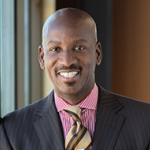Reality check: Change is here to stay.
Over the past two years, people have faced significant change in nearly every facet of their lives. Adjusting to this much change so quickly can be exhausting – making change fatigue a growing concern for many of us.
As an IT leader, you need to proactively address this issue to maintain your teams’ health and productivity. After all, your company’s biggest asset is not your products, your services, or your capabilities ‒ it’s your people.
In a recent Gartner survey of 274 HR leaders, 54 percent say their employees are fatigued from all the change. It’s driven by both large-scale, organization-wide changes and small day-to-day adjustments. What might seem like a minor change or system shift could be making a big impact on your team.
[ Also read: Change management: 4 tips for leaders on embracing human nature. ]
How will you know when your team is fatigued? There are a few tell-tale signs. You may notice increasing indifference about product changes, visibly tired employees, or higher levels of anxiety. You might get more push-back, louder complaints, and hear more doubts from employees.
We’ve all seen these impacts, and, in the midst of a pandemic, stress is a top concern in today’s workplace. While the newly embraced hybrid workforce offers more flexibility, time with family, and miles off your vehicle, it has also led to excessive hours for months on end, creating more stress and fatigue.
Change saturation
It’s critical to understand the amount of change your organization can effectively handle. In a recent Prosci survey, 73 percent of respondents said that their organizations were near, at, or beyond the change saturation point.
Organizations that have reached that critical point of change saturation often begin to experience these negative effects: project priorities changing, bottlenecks emerging, progress and productivity slowing, client and customer complaints increasing.
If you’ve begun to see these indicators, it’s past time to act. One or more of these solutions may be just the prescription for what is ailing your organization.
4 solutions for change fatigue
As IT leaders, we can re-energize our organizations and help our teams deal with change fatigue. Here are some ways to get started.
- Get to know your employees personally. Knowing your team on a personal level helps you see shifts in their personality or engagement level, which can indicate fatigue has begun to take hold. Diversifying roles and projects can be a great way to re-energize employees by exposing them to different experiences and presenting them with new challenges, fresh ideas, and stimulating conversations.
- Keep energy levels high by celebrating and recognizing your employees. Work with leadership to develop frequent, intentional ways of celebrating accomplishments, from project completions to personal certification awards. Implement a way for employees to nominate peers for their efforts and accomplishments too. Honoring achievements can help keep them engaged and motivated for the next project.
- Encourage open dialogue about change and ways to resolve risks before they become issues. Address skepticism head-on. Hold regular meetings to recognize achievements and discuss challenges the team has been facing lately. Institute virtual watercoolers so team members can constructively share how they are feeling. Lay out strategies for handling specific issues – then put your team in the driver’s seat by asking for their ideas and solutions.
- Build a company culture where new ideas are welcomed and shared frequently. Give your employees license to be creative or to push the stop button with confidence. Point out specific ways that they are part of the organization’s change efforts, encourage their participation, and solicit their feedback so they feel they have skin in the game.
As one of the largest employee-owned companies in America, Black & Veatch keeps the well-being of its employees front and center. I encourage you to be bold and think big. Stay curious and pay attention to the emotional state of your peers and team members. Develop solutions that ease your team’s fatigue and help them turn challenges into opportunities. This can make all the difference in their happiness, engagement, creativity, and desire to stay with your company for the long haul.
[ Get exercises and approaches that make disparate teams stronger. Read the digital transformation ebook: Transformation Takes Practice. ]






